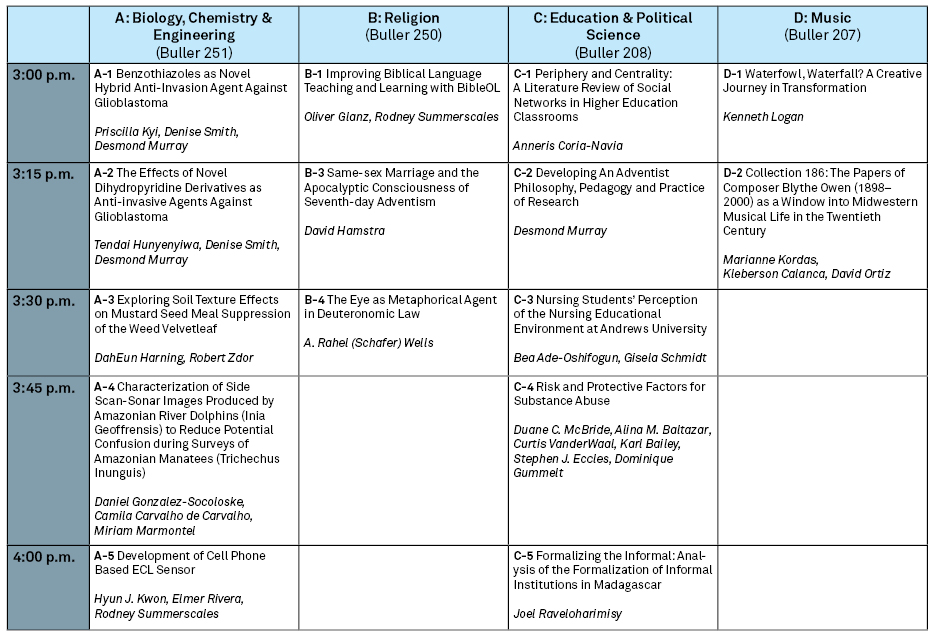A-5 Development of Cell Phone Based ECL Sensor
Presenter Status
Chair and Professor of Dept. of Engineering
Second Presenter Status
Visting Scholar, Dept. fo Engineering
Third Presenter Status
Associate professor, Dept. of Computing
Fourth Presenter Status
Professor of Public Health, Nutrition & Wellness
Preferred Session
Oral Session
Start Date
26-10-2018 4:00 PM
End Date
26-10-2018 4:15 PM
Presentation Abstract
An electrochemiluminescence (ECL) based biosensor was developed utilizing ubiquitous mobile technologies. ECL offers great advantages over fluorescence based measurement: ECL allows high signal-to-noise measurement; ECL is a highly localized and time-triggered detection method; and instrumentation can be minimized as it requires only voltage to trigger the reaction. Cell phone-ubiquity and connectivity creates opportunities to simplify healthcare instrumentation, brings closer to end users, and enable instant data sharing.
A highly compact and affordable instrumentation wad designed and constructed using the mobile technology replacing the traditional ECL detector, computer interface, and data analyzer in an all-in-one mode. Ru (bpy)32+ was embedded in silicon nanoparticles and sandwich immunoassay was conducted. One antibody is conjugated to the Silicon nanoparticles where Ru (bpy)32+ is embedded and the other antibody is attached to magnetic bead so that the bound complex can be attracted to the electrode surface separating the false positive signals. Coreactant tri-n-propylamine (TPrA) or 2-(dibutylamino)ethanol (DBAE) was tested for their ability to enhance the signal.
TPrA provided stronger signals for carbon electrodes and optimal concentration was determined for low signal measurements. The challenge of using disposable screen-printed electrode (SPE) was discussed as the binding materials and its geometry in SPE altered the electrode behaviors. The sensing conditions were optimized by experimenting with variables of buffer conditions, trigger voltage, and electrode conditions. The target sensing molecule of vitamin-D binding protein (DBP) was detected at the hundreds of nano-molar level with the optimized conditions.
A-5 Development of Cell Phone Based ECL Sensor
An electrochemiluminescence (ECL) based biosensor was developed utilizing ubiquitous mobile technologies. ECL offers great advantages over fluorescence based measurement: ECL allows high signal-to-noise measurement; ECL is a highly localized and time-triggered detection method; and instrumentation can be minimized as it requires only voltage to trigger the reaction. Cell phone-ubiquity and connectivity creates opportunities to simplify healthcare instrumentation, brings closer to end users, and enable instant data sharing.
A highly compact and affordable instrumentation wad designed and constructed using the mobile technology replacing the traditional ECL detector, computer interface, and data analyzer in an all-in-one mode. Ru (bpy)32+ was embedded in silicon nanoparticles and sandwich immunoassay was conducted. One antibody is conjugated to the Silicon nanoparticles where Ru (bpy)32+ is embedded and the other antibody is attached to magnetic bead so that the bound complex can be attracted to the electrode surface separating the false positive signals. Coreactant tri-n-propylamine (TPrA) or 2-(dibutylamino)ethanol (DBAE) was tested for their ability to enhance the signal.
TPrA provided stronger signals for carbon electrodes and optimal concentration was determined for low signal measurements. The challenge of using disposable screen-printed electrode (SPE) was discussed as the binding materials and its geometry in SPE altered the electrode behaviors. The sensing conditions were optimized by experimenting with variables of buffer conditions, trigger voltage, and electrode conditions. The target sensing molecule of vitamin-D binding protein (DBP) was detected at the hundreds of nano-molar level with the optimized conditions.




Acknowledgments
This project is funded by the NSF CBET division.